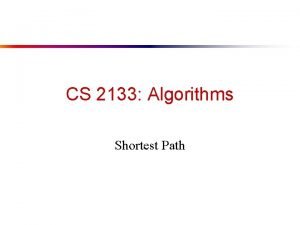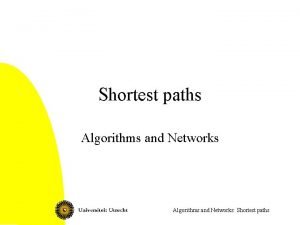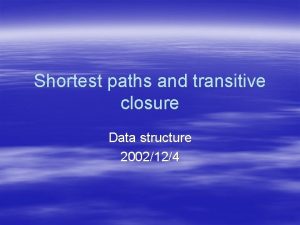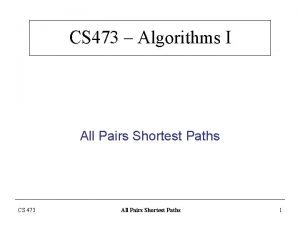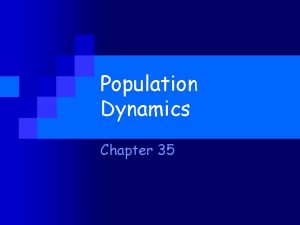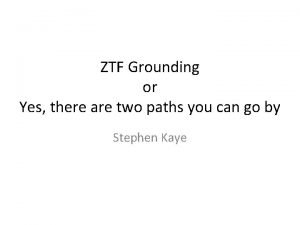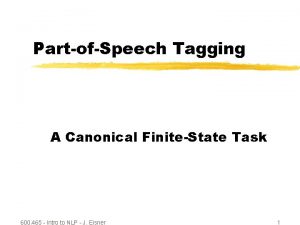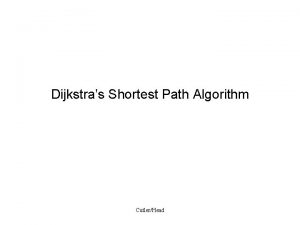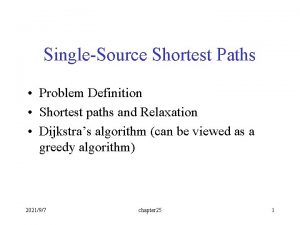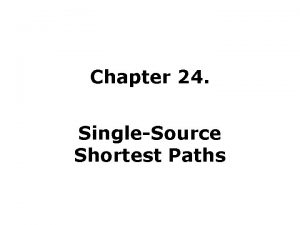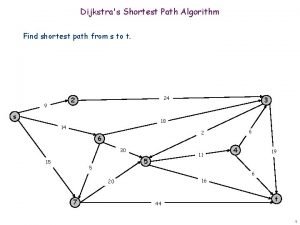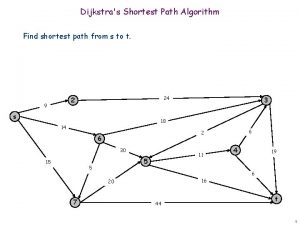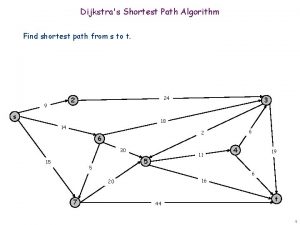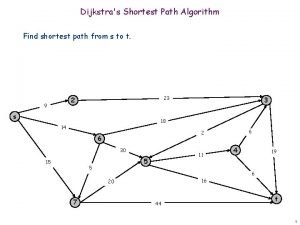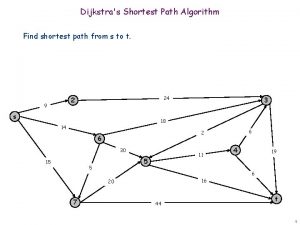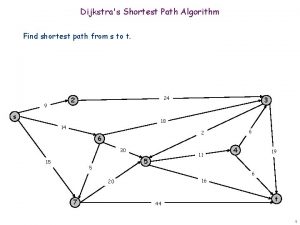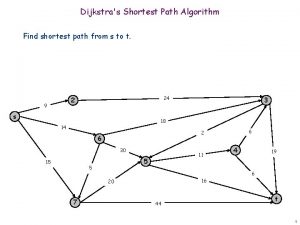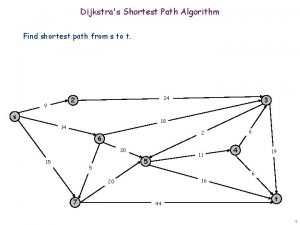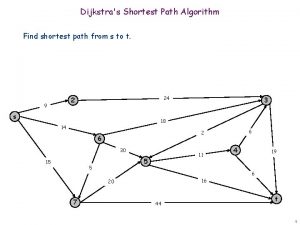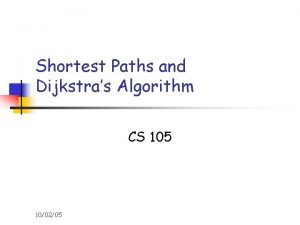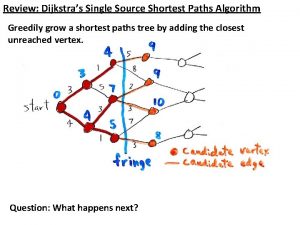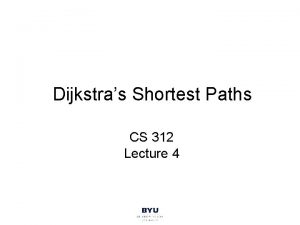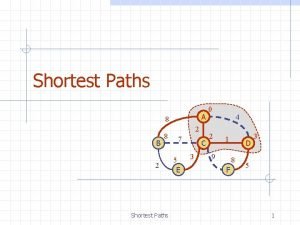Supercharged Dijkstras Computing shortest paths on large road































- Slides: 31

Supercharged Dijkstra’s Computing ‘shortest’ paths on large road graphs in microseconds! Payas Rajan @Payas. R

A graph is composed of Nodes

A graph is composed of Nodes Edges

A graph is composed of… Nodes Edge Weights Shown graph taken from Hannah Bast’s Route Planning lectures

We assume No self loops No parallel edges All edge weights are positive integers

The Problem Find shortest path between s and t

The (Real) Problem: Find shortest path on. Nodes: 264, 346 Edges: 733, 846 New York City Nodes: 321, 270 Edges: 800, 172 San Francisco Bay Area NYC graph was extracted using Geoff Boeing’s OSMnx library and the Bay Area map was taken from Project OSRM and Open. Street. Maps.

Section 1: Dijkstra’s Algorithm

The 1959 paper

The 1959 paper


Relax the shortest edge incident to the frontier Repeat till target ‘t’ found or we run out of nodes

Complexity

Demo 1: Bidirectional Dijkstra’s

Section 2: Contraction Hierarchies

In 2006…

Road network of Helsinki. Height defined by speed limit val Created by Topi Tjukanov (@tjukanov)

Ideas that make CH work 1. Vertices can be ordered by their ‘importance’!

Ideas that make CH work 1. Vertices can be ordered by their ‘importance’! 2. SHORTCUTS!

Ideas that make CH work 1. Vertices can be ordered by their ‘importance’! 2. SHORTCUTS! If U->V->W is the shortest path from U to W, add a shortcut U -> W! (this is called the ‘contraction operation’)

Think about what we just did for a second… We ADDED edges to the graph, and made it bigger… in order to compute shortest paths faster!



Image by Hannah Bast



Considerations 1. In what order should the vertices be contracted? A: In increasing order of their ‘importance’. 2. How to determine importance of a vertex? A: In practice, we fast heuristics suffice. 3. Is there an ‘optimal’ CH? A: Yes, an optimal CH is one where we add minimum number of additional edges to the graph without affecting the performance of shortest path queries.

Demo: Contraction Hierarchies

References • Hannah Bast’s 2012 video lectures on route planning • Geisberger, Robert, et al. "Contraction hierarchies: Faster and simpler hierarchical routing in road networks. " International Workshop on Experimental and Efficient Algorithms. Springer, Berlin, Heidelberg, 2008.

Linear time algorithm available*! *In Theory

In 2014. .
 Shortest path problem linear programming
Shortest path problem linear programming Single-source shortest paths
Single-source shortest paths Difference constraints and shortest paths
Difference constraints and shortest paths Shortest paths and transitive closure in data structure
Shortest paths and transitive closure in data structure Johnson's all-pairs shortest paths
Johnson's all-pairs shortest paths Shortest path problem definition
Shortest path problem definition All-pairs shortest paths
All-pairs shortest paths Undirected
Undirected Paved road vs unpaved road
Paved road vs unpaved road Drive right chapter 8
Drive right chapter 8 Conventional computing and intelligent computing
Conventional computing and intelligent computing Parasitism
Parasitism Language r
Language r Theoretical flow time formula
Theoretical flow time formula Jeremiah 6 16
Jeremiah 6 16 Cyclomatic complexity example
Cyclomatic complexity example Red dot
Red dot Yes there are two paths
Yes there are two paths Forwarding paths pipeline
Forwarding paths pipeline Networks and graphs: circuits, paths, and graph structures
Networks and graphs: circuits, paths, and graph structures Paths start and stop at
Paths start and stop at Human migration out of africa
Human migration out of africa Life paths research center
Life paths research center Eightfold paths of buddhism
Eightfold paths of buddhism Paths, trees, and flowers
Paths, trees, and flowers Reconstruct market boundaries
Reconstruct market boundaries Parabolic paths
Parabolic paths Fellowship with god in the sixth path
Fellowship with god in the sixth path Linearly independent paths
Linearly independent paths Teach me your ways oh lord
Teach me your ways oh lord All paths lead to the same destination
All paths lead to the same destination Augmenting path algorithm
Augmenting path algorithm

